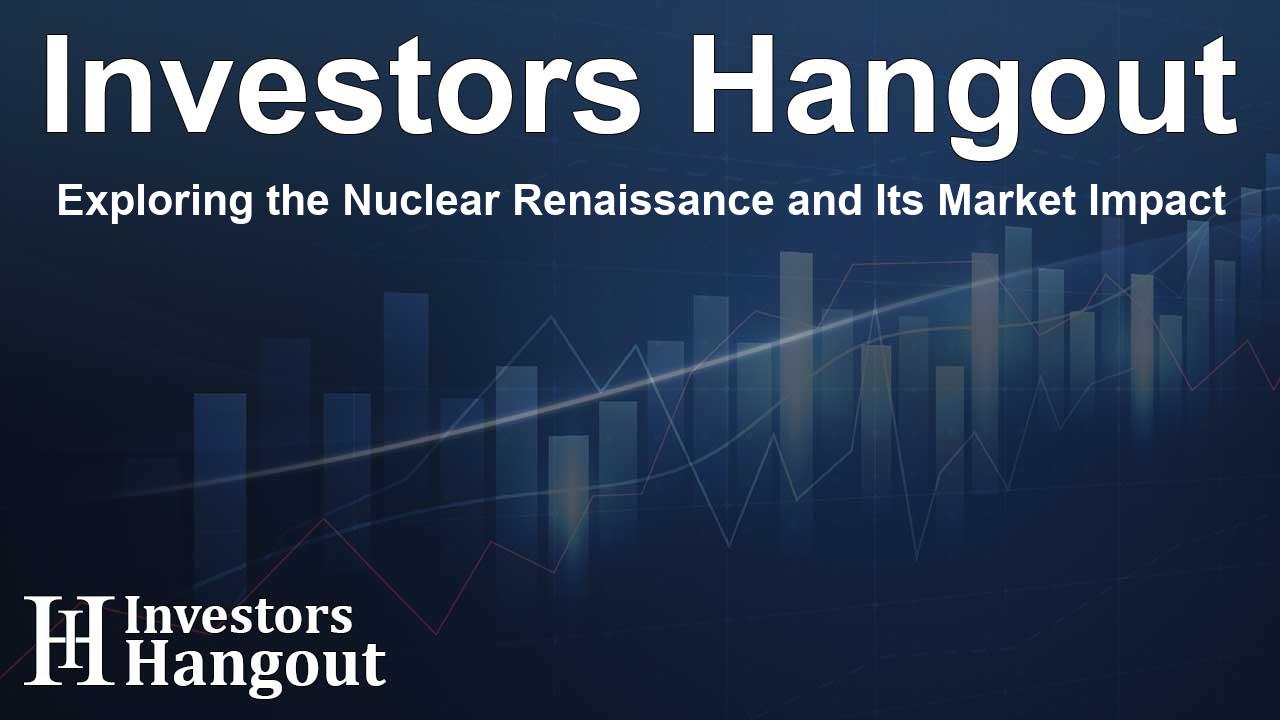Exploring the Nuclear Renaissance and Its Market Impact

The Rise of Nuclear Power in the Modern Energy Landscape
As the world seeks stable and sustainable energy sources, analysts from Goldman Sachs have identified what they describe as the "early stages of a nuclear renaissance in the U.S." This resurgence occurs after a long favoring of renewable energy sources. Now, with increasing demand for energy, particularly from growing data centers, nuclear power is back in the spotlight.
Boost from Industry Giants
Major technology companies such as Microsoft Corporation (NASDAQ: MSFT), Amazon.com Inc (NASDAQ: AMZN), and Alphabet Inc (NASDAQ: GOOGL) are pivotal in this momentum shift. These corporate titans are under mounting pressure to diversify their energy sourcing strategies.
Nuclear Energy and Data Center Needs
Led by analyst Brian Singer, Goldman Sachs projects the power needs for data centers could grow by 165% by 2030 compared to levels seen in recent years. This immense demand is prompting the tech giants to consider nuclear energy as a viable, low-carbon solution to help meet their rising energy requirements.
Challenges of Renewable Energy
While renewable sources like solar and wind power have gained popularity, their limitations must be acknowledged. These energies require large amounts of land and are less reliable without significant infrastructure. In contrast, nuclear power can be a more compact and efficient energy source, allowing for reduced land use.
The Importance of Small Modular Reactors
At the forefront of this nuclear revival are Small Modular Reactors (SMRs), designed to be more compact and flexible than traditional nuclear reactors. Tech giants like Google, Microsoft, and Amazon have entered contracts for SMR technology, underscoring a trend towards localized power that could address their energy demands sustainably.
Contracts and Collaborations
The increased focus on SMRs has resulted in significant engagements from large cloud providers looking to bolster their energy strategies. They are motivated by the promise of reliable, low-carbon power.
Expansion of Large-Scale Nuclear Projects
In addition to SMRs, the report indicates that larger nuclear initiatives are underway. For instance, Constellation Energy Corporation (NYSE: CEG) has announced plans to reactivate a dormant facility at the Three Mile Island plant, backed by a substantial power contract with Microsoft. This suggests that many more such projects may be initiated soon, addressing the future power demands of the country.
Government Support for Nuclear Energy
Globally, governments are re-evaluating their positions on nuclear energy, driven by energy security concerns. Countries are increasingly supportive of integrating nuclear power into their energy strategies. There is a notable shift in perspective, and the outlook towards nuclear energy is becoming more favorable, even at forums like COP28 where future plans are being discussed.
Uranium Supply Challenges
Despite the uplifting trends in nuclear energy, challenges surrounding uranium sourcing persist. A significant portion of the global supply is controlled by a limited number of countries. This situation adds complexity and necessitates clear regulations regarding uranium sourcing to facilitate nuclear power growth in both the U.S. and Europe.
Cameco Corporation's Role in the Nuclear Future
Amidst this energy evolution, Cameco Corporation (NYSE: CCJ) emerges as a key player. According to Goldman Sachs, Cameco operates across the nuclear fuel cycle, positioning it well to capitalize on the anticipated growth in nuclear energy. The company's comprehensive operations encompass everything from mining to fuel fabrication.
Goldman Sachs has issued a 'Buy' rating for Cameco, forecasting a potential price target of $61 within the next year—a 20% increase from current market levels. This optimism reflects the bank's confidence in Cameco's potential to meet the demands of both established and future nuclear energy requirements.
Frequently Asked Questions
What is driving the nuclear renaissance in the U.S.?
The increasing energy demands from data centers, coupled with tech giants diversifying their sources, are primary drivers behind the nuclear resurgence.
How do Small Modular Reactors (SMRs) differ from traditional reactors?
SMRs are more compact and flexible, making them easier to deploy and providing reliable low-carbon power for energy needs.
What is Cameco Corporation's significance in the nuclear industry?
Cameco is recognized for its comprehensive involvement across the nuclear fuel cycle, which positions it as a leader amid the growing interest in nuclear energy.
What challenges does uranium sourcing face?
Uranium sourcing is complicated due to the concentration of supply in a few countries, necessitating a focus on regulatory clarity to enable growth.
What are the implications of government support for nuclear energy?
Increased government support around the globe signals a shift in perspective regarding nuclear energy as a stable and sustainable power source.
About Investors Hangout
Investors Hangout is a leading online stock forum for financial discussion and learning, offering a wide range of free tools and resources. It draws in traders of all levels, who exchange market knowledge, investigate trading tactics, and keep an eye on industry developments in real time. Featuring financial articles, stock message boards, quotes, charts, company profiles, and live news updates. Through cooperative learning and a wealth of informational resources, it helps users from novices creating their first portfolios to experts honing their techniques. Join Investors Hangout today: https://investorshangout.com/
Disclaimer: The content of this article is solely for general informational purposes only; it does not represent legal, financial, or investment advice. Investors Hangout does not offer financial advice; the author is not a licensed financial advisor. Consult a qualified advisor before making any financial or investment decisions based on this article. The author's interpretation of publicly available data shapes the opinions presented here; as a result, they should not be taken as advice to purchase, sell, or hold any securities mentioned or any other investments. The author does not guarantee the accuracy, completeness, or timeliness of any material, providing it "as is." Information and market conditions may change; past performance is not indicative of future outcomes. If any of the material offered here is inaccurate, please contact us for corrections.